Right now, most investors I hear from want three things in a dividend stock:
- Low volatility.
- A worry-free income stream to draw on during this crisis.
- Market-beating gains in the long run.
Sounds like a pipe dream, I know. But these three things are a lot easier to get (even these days!) than most people think. The telltale sign of a stock that delivers them is something most folks overlook: the dividend.
Specifically, I’m talking about the rate of dividend growth. In fact, I’d go so far as to say that a fast-rising payout is the No. 1 driver of share prices. To see what I mean, take a look at this chart:
A “Dividend Magnet” in Action
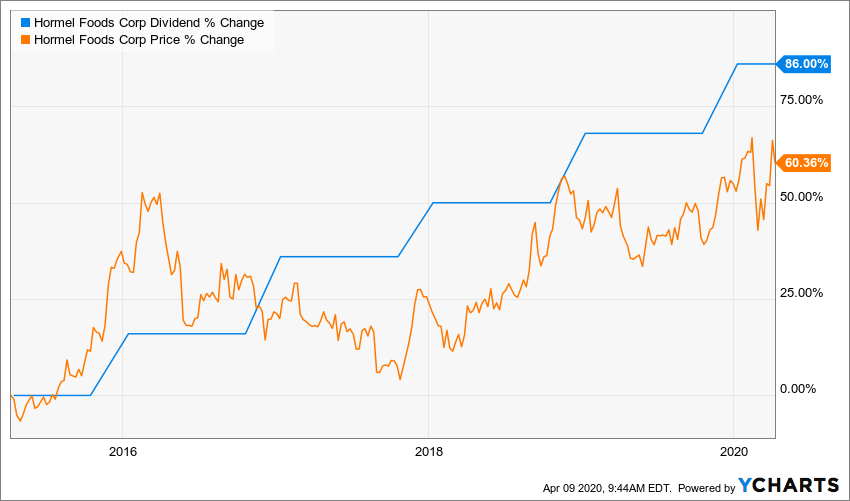
This is the chart of Hormel Foods (HRL), a stock I’ve recommended in my Hidden Yields advisory. Along with its ironic and iconic SPAM brand, Hormel also peddles bacon, chili, peanut butter and other staples.
As you can see, Hormel’s dividend has surged 86% in the last five years, pulling its stock price up with it; the stock clearly jumps when every payout increase rolls out. (The current gap between the dividend and share price—largely a result of the current crisis—represents Hormel’s “catch up” upside, nicely ticking off checkbox No. 3 above.)
Does that dividend growth help Hormel outperform in a crisis? You bet. As you can see below, Hormel is on the (short) list of companies that have posted positive returns this year:
Hormel Beats a Crisis Once …
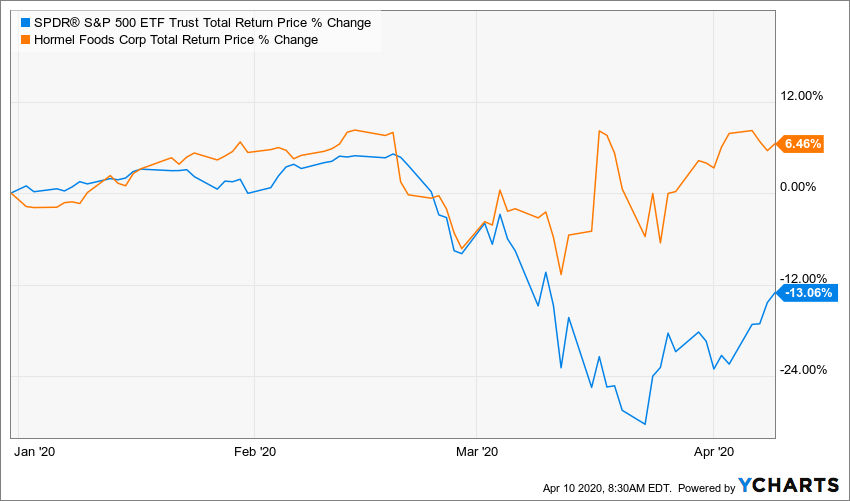
That’s no fluke. Hormel pulled off the same feat in 2008/2009. Look at its performance in the two-year span running from January 1, 2008, to December 31, 2009. You can clearly see that Hormel’s returns didn’t fall as far as those of the market, and shareholders got back to breakeven a lot faster:
… And Again

And if you think I’m simply cherry-picking my previous picks here, let me assure you I’m not.
Let’s examine the dividend/price correlation of another of my Hidden Yields recommendations: self-storage chain National Storage Affiliates (NSA). Its predictable hikes—which come your way more than once a year—have resulted in a total dividend increase of 120% in just the past five years!
And because investors have come to expect these increases, they’ve bid up the stock price in lockstep:
Gains Don’t Get More Predictable Than This
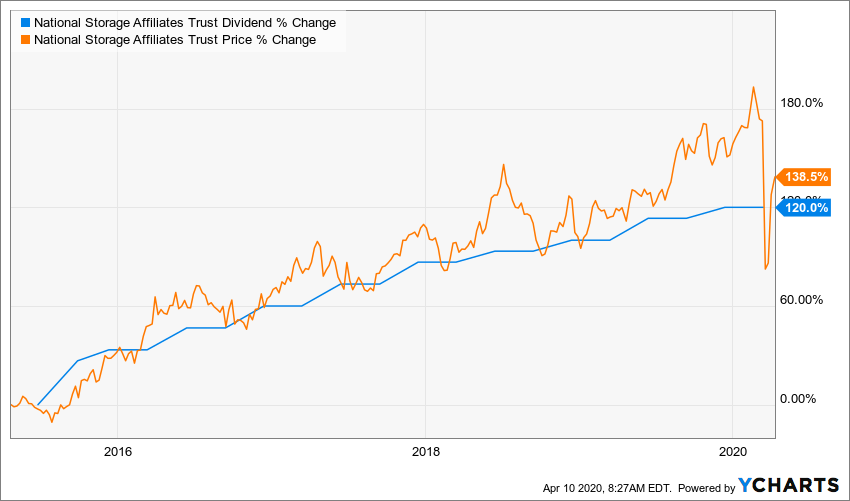
And talk about crisis outperformance—NSA is a warhorse, with 11% total returns year to date, even stronger than Hormel!
This latest pullback isn’t NSA’s first rodeo, either: the company wasn’t publicly traded in 2008 (its IPO was in 2015), but it sailed through the late-2018 crash—NSA investors could be forgiven for wondering what all the panic was about.
2018 Crash Was No Problem for NSA
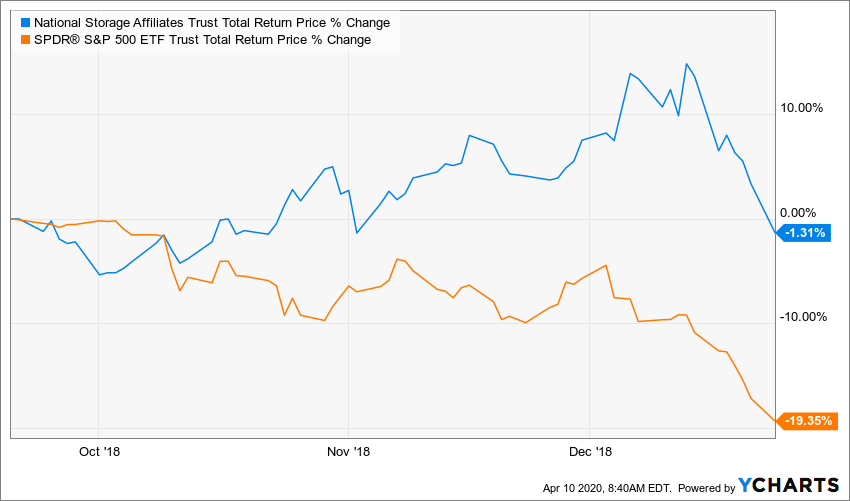
A 3-Step Checklist for Volatile Times
All of this raises an obvious question: how do we zero in on companies like these when safe dividends feel like they’re going extinct? Goldman Sachs (GS), for example, says S&P 500 payouts will plunge 25% this year.
Let me answer that with another checklist of three “must haves” we need in any stock we buy now:
- A history of strong dividend growth, especially in a crisis.
- A safe dividend backed by a low payout ratio, or dividends as a percentage of free cash flow (FCF), as well as a healthy balance sheet and strong sales.
- A share price that’s lagging payout growth—giving the stock “snap back” upside as it catches up. Both of the above stocks matched up nicely with this three-step checklist when I recommended them, but let’s zero in on my recommendation of Hormel on October 19, 2018.
We’ve already touched on Hormel’s strong dividend history, but I’d add to that by saying it’s a Dividend Aristocrat; it was about to announce its 53rd consecutive yearly hike when I recommended it (and, yes, it announced its 54th last year).
Let’s talk upside: even though the stock’s price had tracked its dividend higher when I recommended it, it had started to lag behind. That opened our buy window.
Hormel’s Buy Window Opens …
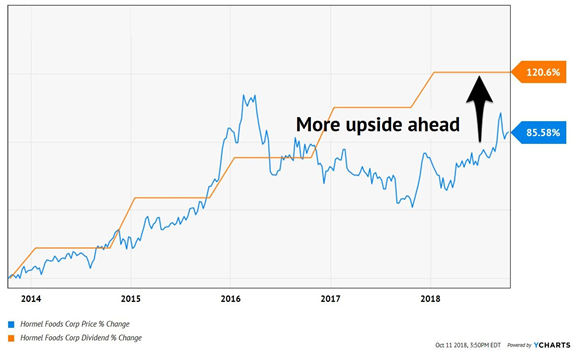
Fast-forward to today, and the stock has delivered a nice 17% total return for us, clobbering the market’s meager 3.8%.
… and Propels Us to a Market-Crushing Gain
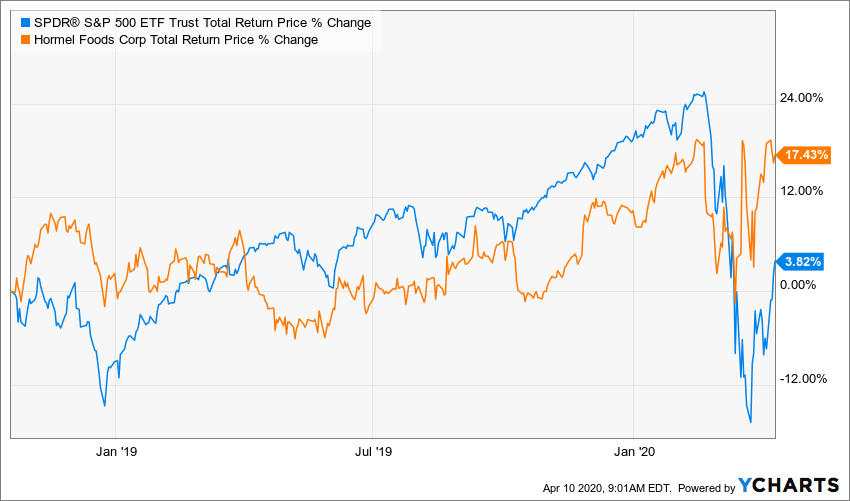
Next up, the payout ratio, which stood at an ultra-safe 42% at the time of my recommendation, so I could see that this Dividend Aristocrat had the flexibility to keep its payout rising.
Finally, Hormel’s balance sheet was (and is) strong. Today, it boasts just $309 million of long-term debt, less than half of its $724 million of cash.
Emergency Update: These 7 Stocks Are Urgent Buys Now
If you’re like me, you’ve had your life upended by this crisis. I’m working day and night to analyze dividend stocks in between “real-life” homeschool sessions like this one:

No doubt you shared this guy’s feelings in recent weeks! The Dow’s white-knuckle plunges of 1,000+ points have been frightening to watch, with your gut instinct screaming at you to go to cash and save your nest egg.
Now the script has flipped again: with the massive bounce we’ve seen, you’re likely worried about the opposite: that you’ll miss the biggest gains if you don’t buy now!
This dilemma is why I’m writing you today: because I’ve uncovered 7 stocks whose dividends are growing so fast they’re “must buys” no matter what the market does.
These 7 companies’ dividends support their share prices in a pullback—and drive them up faster than the market in a rebound, just like we saw with Hormel and NSA.
Here’s the key takeaway: If you add these 7 stout dividend growers to your portfolio now, you can look forward to easy double-digit gains in the long run, unbeatable stability now and a growing income stream you can tap throughout this crisis—and for many years to come.
That’s right, even if the Dow collapses another 1,000, 2,000, even 5,000 points, I’d still be buying these investments—and I suggest you do the same!
And now, given the magnitude of recent events, I’m sharing them with you today. Click here for full details on these 7 “recession-fighter” dividends: names, tickers, complete dividend histories and everything else you need to know before you buy.
